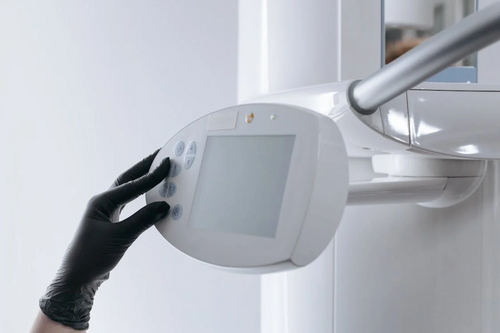
21 Nov Exploring Career Paths for Radiography Graduates
Radiography graduates can explore many career possibilities within healthcare. By using imaging technology for the diagnosis and treatment of patients, these professionals provide essential healthcare support services. From working in hospitals to research careers or advanced specializations, radiography provides many exciting career options.
Graduates in radiography programs can tailor their career decisions based on interests or expertise gained during graduate training. This article discusses some key career pathways available for graduates who have completed a comprehensive radiography program, with each offering its own set of responsibilities and professional growth potentials. Continue reading below for more details.
Clinical Radiography for Diagnostic Imaging and Patient Care
Clinical radiography offers promising careers for graduates who want to pursue hands-on patient care. Radiologic technologists use imaging technology like X-rays, CT scans and MRIs to help doctors diagnose health conditions. They can opt to work in hospitals, clinics or outpatient centers, providing images essential for accurate diagnoses.
Radiologic technologists act as patient advocates by explaining procedures in detail, ensuring patient comfort and maintaining adherence to safety standards and regulatory compliance, making this role ideal for those who value direct patient interaction.
Specialized Fields of Operations: Advanced Imaging and Interventional Radiography
Radiography graduates looking for further specialization may explore careers in advanced imaging fields like mammography, sonography, or nuclear medicine. These fields provide additional training in imaging techniques focused on specific body areas or conditions.
Mammography technologists specialize in breast imaging techniques that help detect cases of breast cancer early, whereas nuclear medicine technologists make use of radioactive substances as effective imaging agents and treatments. Minimally invasive intervention radiography, on the other hand, deals with minimal invasion procedures through guided imaging technology within varied treatments for patients, including biopsies, placement of catheters, and vascular interventions.
All of these roles demand precision and expertise, making them attractive options for graduates looking for advanced technical careers. Specializing in one of these fields can not only increase job satisfaction and challenges but can open doors to advanced positions with increased salaries.
Education and Research: Shaping the Next Generation
Some graduates in radiography opt to enter education or research fields where they can help foster the professional growth of future professionals while furthering imaging technologies. Teaching can be rewarding work; individuals with a passion for instruction could work as instructors or program directors at radiography schools to teach essential skills while developing talent in newer students.
Working as educators enables radiographers to pass along their knowledge and experiences while staying current with developments within their field. Research roles usually consist of working within universities, research institutions, or healthcare facilities in areas like developing imaging techniques and radiation safety regulations or improving diagnostic tools.
Essentially, radiography research can open doors to groundbreaking discoveries that revolutionize patient care and safety, offering graduates who excel in academic work an exciting opportunity to shape the future of radiography and contribute to healthcare more broadly.
Healthcare Administration: Leadership and Management
Radiography graduates who have a knack for leadership and management might consider careers in healthcare administration, especially within radiology departments. Their background provides them with valuable insights into imaging processes, patient needs, and technological requirements—expertise they can leverage in their roles as healthcare administrators.
For example, administrative roles within radiology departments or imaging facilities could involve overseeing radiology units, managing imaging facilities, or working as department directors within hospitals, taking on responsibilities such as budgeting, scheduling, quality control, and staff administration. Healthcare administrators play an essential part in making radiology departments run efficiently, which ultimately benefits patients as well as staff satisfaction.
Opting to enter healthcare administration could present radiography graduates with additional career advancement options. Radiography professionals who desire greater responsibility may opt to pursue further study with degrees in healthcare management or business administration to strengthen their qualifications for these roles. This path offers tremendous possibilities for shaping healthcare policies and practices from within their profession.
Final Thoughts
Radiography graduates enjoy many career options that empower them to make significant contributions to healthcare delivery. No matter their career choice—patient diagnostic imaging, advanced imaging specialization, teaching future radiographers, or leading research—each path presents its own rewards and challenges.
Radiography is a field with dynamic career possibilities that blends technical expertise, patient interaction, and professional growth. Radiography degrees offer graduates flexibility when choosing careers, so they can tailor their path according to what interests them.
As healthcare technology and practices advance further, so will their role within it, offering many chances for growth and advancement within this essential profession.
————–
The information on MedicalResearch.com is provided for educational purposes only, and is in no way intended to diagnose, cure, or treat any medical or other condition.
Some links are sponsored. Products are not warranted or endorsed.
Always seek the advice of your physician or other qualified health and ask your doctor any questions you may have regarding a medical condition. In addition to all other limitations and disclaimers in this agreement, service provider and its third party providers disclaim any liability or loss in connection with the content provided on this website.
Last Updated on November 21, 2024 by Marie Benz MD FAAD

